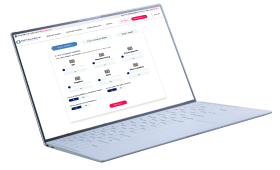
Understand your company's position and learn more about the options available
Require Immediate Support? Free Director Helpline: 0800 644 6080
Free Director Helpline: 0800 644 6080
Updated:
Once a company enters administration it is given the benefits of a moratorium, a powerful legal ringfence which prevents legal action being taken against the company. This means creditors of an insolvent, or financially distressed, company cannot initiate further recovery action including petitioning the court for the company to be wound up.
Free 60 Second Test
For Ltd Company Directors
What are you looking to do?
Choose below:
The important thing to note with a moratorium is that it is a temporary measure. It is not a get out of jail free card; instead it gives the company a chance to sort out its issues, safe from the threat of legal action. Creditors still retain their rights and the claim over the money they are owed; however, they are temporarily stayed while the moratorium remains in place.
The administration must serve a purpose; a company will not be allowed to stay in administration forever simply delaying the inevitable. Instead a company must use this opportunity, and the protection provided by the moratorium, to put plans in place with its creditors to achieve the statutory objective of the administration and for a decision to be reached as to the future direction of the business. During this time the creditors’ interests need to take priority over those of the company’s directors and shareholders.
Corporate Restructuring Options
When a company is in difficulty, sometimes a process of financial and/or operational restructuring is needed. From CVAs through to Administration, there are a range of rescue and recovery options to help you get back on track.
Learn more about restructuring by calling our team - 0800 644 6080
Get a Quote Find Your Nearest Office
An interim moratorium is granted once the company files a notice of intention to appoint an administrator. The appointment of an administrator must be made within 10 business days of filing the notice of intention in court and, immediately on appointment, a second moratorium is given. This moratorium lasts until the company exits administration.
There are several ways a company can exit administration with the most appropriate route being determined by the company’s financial position and viability as a going concern.
In some cases, the breathing space provided by the moratorium may be enough to allow the company to overcome its challenges and come to an agreement with creditors. If this is the case, the company would exit administration, the administrator would hand back control of the company to the directors, and the company would continue to trade.
In many cases, however, a further insolvency process is often required in order to resolve the problems the company is facing.
Can’t pay CBILS or Bounce Back Loan?
Don't worry - there are thousands of other company directors in the same position. If you are struggling to keep up with your Covid loan repayments, speak to a member of the Real Business Rescue team to discuss your options. It's Free & Confidential.
The team are available now - 0800 644 6080
Should the company have a realistic chance of becoming successful again in the future but requires an element of restructuring in order to do so, a recovery procedure such as a Company Voluntary Arrangement (CVA) may be recommended.
A CVA involves negotiating with creditors in order to come up with a mutually agreeable payment plan; some debt will be written off, with the rest being paid back over the course of the CVA which typically last between two and five years.
The administrator will draw up a CVA proposal to present to creditors and, if this is accepted, the administrator would then hand back control of the company with all parties henceforth being bound by the terms of the CVA. Contracts (including leases) can be renegotiated while unprofitable arms of the company can be closed down in order to maximise the chance of the company recovering.
In some cases, it may be decided that the company’s problems have reached such a level that it has no viable future as a successful trading entity and creditors would gain more by the company being closed. If this is deemed to be the case, the company will be placed into a voluntary liquidation procedure known as a Creditors’ Voluntary Liquidation (CVL).
Alternatively the administrator may have sold the business and assets in the administration process and simply need to move to CVL to facilitate a distribution of funds to creditors. A CVL may otherwise achieve alternative objectives, such as enabling the liquidator to disclaim onerous property or complete more time-consuming investigations into conduct or claims against third parties.
Need to speak to someone?
If your company is struggling with unmanageable debts, squeezed cash flow, or an uncertain future, you are far from alone. We speak to company directors just like you every single day, and we are here to give you the help and advice you need.
Call our team today on 0800 644 6080
If your company is dealing with financial distress and you are considering administration, liquidation, or any other insolvency procedure, contact the experts at Real Business Rescue. You can arrange a completely free no-obligation consultation with a licensed insolvency practitioner at a time and place to suit you. With a network of over 100 UK offices you are never far from expert help and guidance.
Still unsure whether liquidation is right for your company? Don't worry, the experts at Real Business Rescue are here to help. Our licensed insolvency practitioners will take the time to understand the problems your company is facing before recommending the best course of action going forward based on your own unique circumstances.

Complete the below to get in touch
For Ltd Company Directors
What are you looking to do?
Choose below:
We provide free confidential advice with absolutely no obligation.
Our expert and non-judgemental team are ready to assist directors and stakeholders today.

Understand your company's position and learn more about the options available

Find your nearest office - we have more than 100 across the UK. Remote Video Meetings are also available.

Free, confidential, and trusted advice for company directors across the UK.